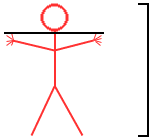| 1. | Choose a manipulative to replace the above blank and write the rest the conversation. |
| 2. | Draw your construction according to your reply. |
| 3. | You have completed the instructions and your friend says, "Yes, but how do you know that they are complementary?"
Write what you could answer your friend. |
| 4. | Is it possible to draw the following angles? If yes, draw them. If no, explain why it is not possible. |
| | a) | Two adjacent obtuse angles that are complementary. |
| | b) | Two adjacent angles, one acute and one obtuse that are complementary. |
| | c) | Two adjacent reflex angles that are complementary. |
| | d) | Two adjacent congruent angles that are complementary. |
| | e) | Three adjacent angles that are complementary angles. |
| | f) | Two complementary angles who together are congruent to a reflex angle. |
